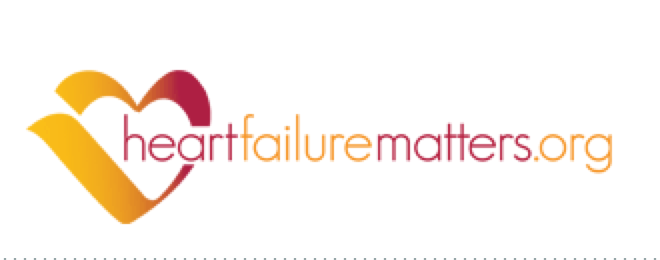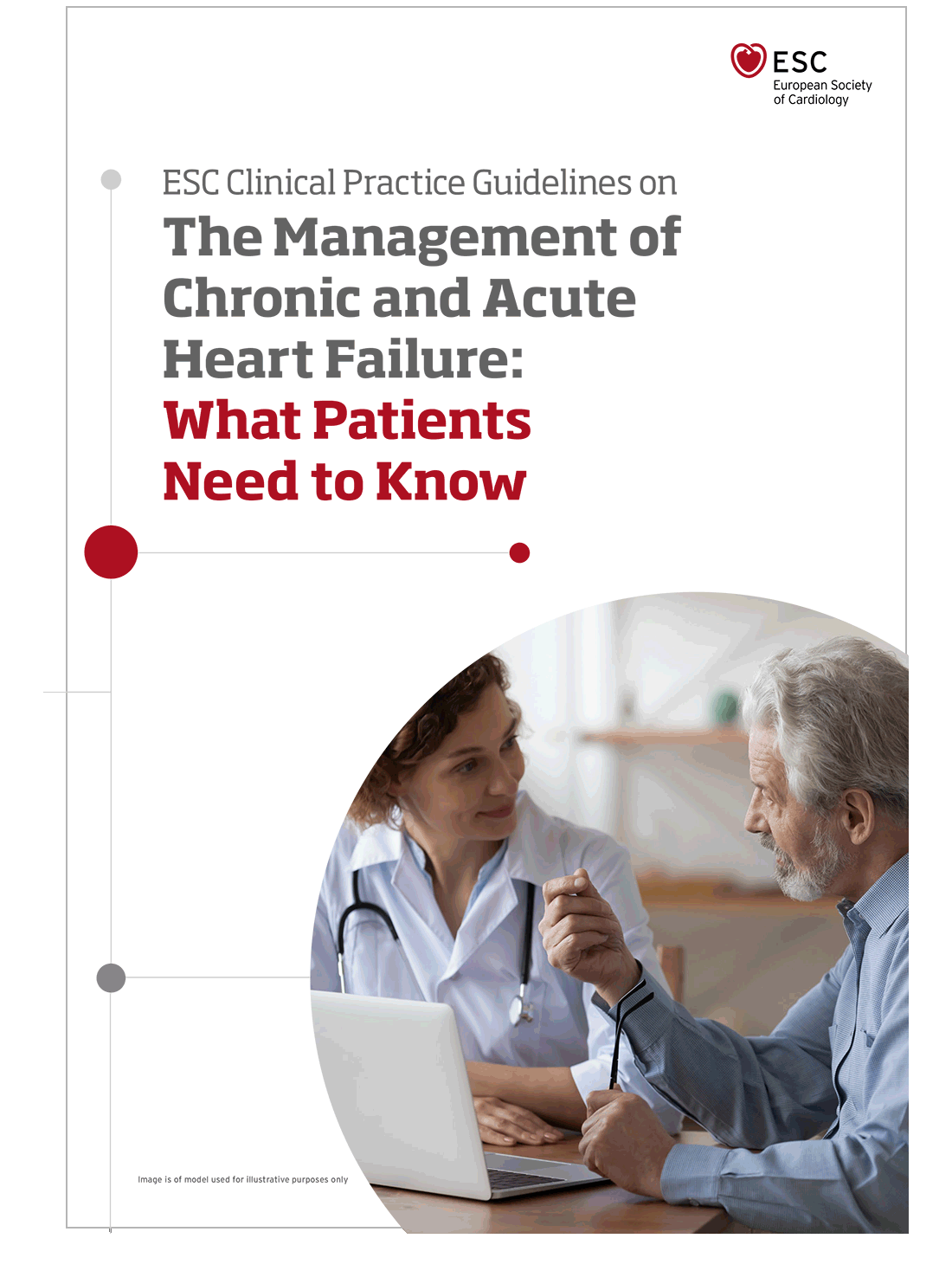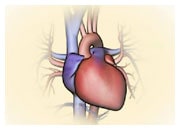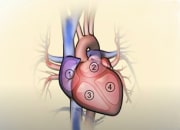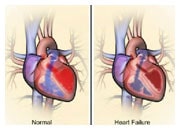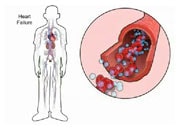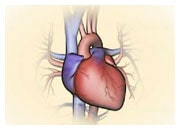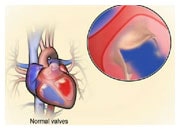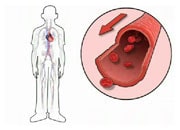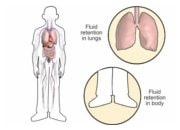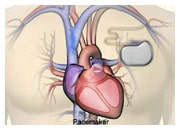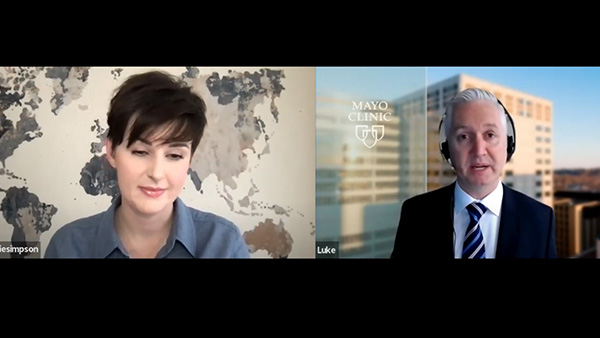Glossary: learn the definitions of the keywords used in this site
A – B – C – D – E – F – G – H – I – J – K – L – M – N – O – P – Q – R – S – T – U – V – W – X – Y – Z
Acute heart failure: heart failure that develops suddenly (often due to a heart attack). Although it may be severe initially, it may only last for a brief time and improve rapidly.
Adrenal glands: glands situated above your kidneys that secrete hormones to help control your heart rate, blood pressure, kidney function, the way your body uses food and other vital functions.
Advance care directive: a document that details the treatments and procedures you want or don’t want to be considered at the end of your life.
Aldosterone receptor antagonists: a class of medicines used to lower blood pressure, reduce congestion and protect your heart.
Anaemia: a low number of red blood cells or a low amount of haemoglobin in your blood cells, resulting in reduced oxygen delivery to tissues and organs.
Angina: pain or discomfort in the chest as a result of reduced blood supply to a part of the heart muscle. It is usually caused by coronary artery disease.
Angiography: a test using an injection of a liquid dye that is visible on x-rays to identify blockages in your coronary arteries.
Angiotensin II: a hormone produced naturally by your kidneys that causes constriction of your blood vessels, reduces urine production and increases your blood pressure.
Angiotensin converting enzyme (ACE) inhibitors: a class of medicines that inhibit the production of angiotensin II and lower your blood pressure.
Angiotensin receptor blockers (ARBs): a class of medicines that block the actions of angiotensin II and lower your blood pressure.
ARNI: a medicine that improves symptoms and prognosis in patients with heart failure and a reduced ejection fraction. It consists of 2 components: an angiotensin receptor blocker plus a neprilysin inhibitor.
Arrhythmia: an irregular heart rhythm.
Asthma: a respiratory condition that causes narrowing of the lung passageways, making breathing out especially difficult.
Antiarrhythmics: medicines used to control irregular heart rhythms and extra heart beats.
Anticoagulants: also called blood thinners. They counteract the formation of blood clots and are particularly important medicines for patients with atrial fibrillation.
Antiplatelet drugs: medicines that inhibit the action of platelets in the blood and thus prevent blood clots forming, especially in the coronary arteries.
Anti-thrombotics: medicines that prevent the formation or growth of blood clots. Anticoagulants, antiplatelets and thrombolytics are all types of anti-thrombotics.
Asthma: a respiratory condition that causes narrowing of the lung passageways, making breathing out especially difficult.
Atria: the smaller, upper chambers of the heart that fill the larger ventricles.
Atrial fibrillation
irregular and often rapid beating of the left upper chamber (atrium) of your heart leading to irregular beating of the ventricles.
Atrium: the smaller cavity that is placed before the larger cavity, i.e. the ventricle; a heart has 2 atria and 2 ventricles.
B
Beta blockers: a class of medicines used to slow your heart rate or lower your blood pressure.
Black outs: a term used for a sudden, temporary loss of consciousness caused by reduced blood flow (and therefore less oxygen) to the brain. They are usually due to low blood pressure or a slow heart rate.
Blinded: a blinded clinical trial is a study of a drug in which the recipient does not know if he/she is receiving the active study drug or placebo (dummy pill).
Brand name: the name given to a medicine by the drug company that makes it. Doctors may prescribe using either the brand or generic (scientific) name.
C
Calcium channel blockers: a class of medicines used to treat high blood pressure, angina and some irregular heart rhythms.
Cardiac markers: substances released into the blood by the heart muscle when it’s damaged. The levels of these substances can be measured using blood tests to identify if there has been any damage.
Cardiac MRI: a type of heart imaging using a powerful magnetic field to provide very detailed images of the heart.
Cardiac resynchronisation therapy (CRT): a type of pacemaker that helps your heart maintain a healthy rhythm and improves co-ordination of the contraction of the left main pumping chamber of the heart (ventricle).
Cardiomyopathy: a condition that causes the heart muscle to become enlarged, abnormally thick or rigid. There are many causes of cardiomyopathy.
Cardiopulmonary resuscitation (CPR): a life-saving procedure which involves manual chest compressions to keep the heart pumping and mouth-to-mouth breathing to maintain respiration.
Catheter: a thin, flexible medical tube, that can be inserted into a cavity of the body, e.g., a blood vessel or the urinary bladder; catheters may be used to treat diseases or perform a diagnostic or surgical procedure.
Chest x-ray: a test used to photograph the chest area, including the lungs, heart, blood vessels and bones of the spine. In heart failure, a chest x-ray is used to identify signs of congestion, infection or fluid accumulation.
Cholesterol: a “fatty” substance that is important for many functions in the body and is present in many foods. There are several types of cholesterol. Too much low-density cholesterol can bring on diseases of the heart and vessels.
Chronic heart failure: long-term heart failure that develops slowly over time, may gradually get worse and requires long-term therapy.
Chronic obstructive airways/pulmonary disease (COPD): a lung disease that is usually caused by smoking and where the tubes in the lungs are partly blocked, making it difficult to breathe.
Clinical trials: medical research studies in human patients. They are set up to answer specific questions and to try and find better ways to prevent, detect, or treat conditions such as heart failure or to detect possible side effects of medicines.
Compensation: a term used to describe how the body attempts to make up for the poor blood flow associated with heart failure. This usually includes an increased heart rate and fluid retention.
Congenital: existing at birth, for example a condition that is present at birth.
Congestion: when there is too much fluid circulating in the blood vessels of the body, pressure rises and fluids leak out into the surrounding tissues and generates so-called oedema.
Coronary arteries: blood vessels that supply blood to the heart muscle.
Coronary artery bypass grafting (CABG)
a surgical procedure to re-direct blood flow around a blockage in a coronary artery. A blood vessel is taken from the leg or chest wall and grafted on to the diseased artery above and below the blockage.
Coronary artery disease: occurs when the coronary arteries become narrowed or completely blocked. This causes blood flow to be reduced and can lead to angina, heart attack and heart failure.
Cyanosis: a bluish discoloration of the skin due to a lack of oxygen in the blood that is usually caused by a congenital heart defect.
D
Defibrillation: a process used to correct an abnormal heart rhythm by applying an electric shock across the chest.
Diabetes: a condition where either the body doesn’t produce enough insulin, or the insulin it produces doesn’t work properly. This means the body can’t use glucose (sugar) properly.
Digoxin: a medicine used to control abnormal heart rhythms and improve performance.
Dilatation: enlargement, or expansion, of a vessel or chamber.
Diuretic
a class of medicines that act on the kidneys to produce more urine, reducing fluid retention and congestion.
Do-not-resuscitate (DNR) order: a document for your healthcare professionals that states you do not wish to be resuscitated if your heart and breathing stop.
Double-blind: a double-blind clinical trial is a study of a drug in which neither the recipient nor the investigator knows if the recipient is receiving the active study drug or placebo.
E
Echocardiogram: a test that uses ultrasound to view the heart chambers, valves and surrounding tissues. Function and blood flow can be assessed.
Electrocardiogram: a test that records the electrical activity of the heart. Information about heart rate, rhythm and electrical conduction are recorded. Evidence of damage, ischaemia and hypertrophy can be identified.
Erectile dysfunction: a term used to describe the inability of a man to achieve or maintain an erection sufficient for sexual intercourse.
Exercise capacity: a term used to describe how physically fit a person is or how much exercise his/her body can perform.
Exercise testing: controlled physical activity, usually on a treadmill or stationary bicycle, used to assess how well the heart and body deals with exercise or stress. This test may show evidence of ischaemia due to coronary artery disease.
F
Fluid accumulation: when there is too much fluid in the blood circulating around the body and congestion the pressure rises in the blood vessels. Fluid then leaks out into the surrounding tissues, where it accumulates leading to oedema.
G
Generic name: the scientific name for the active ingredient of the medicine.
Glucose: a sugar that is an essential source of energy for the body.
H
Haemoglobin: a complex protein-iron compound in the blood that carries oxygen to the cells from the lungs and carbon dioxide away from the cells to the lungs.
Haemorrhage: the medical term for bleeding. In common usage, a haemorrhage means particularly severe bleeding.
Heart attack: damage that happens to the heart muscle when a coronary artery becomes blocked and blood flow to a part of the muscle is severely reduced or stopped.
Heart transplantation: a surgical procedure that takes a working heart from a recently deceased organ donor and implants it into a person whose heart does not work properly.
Hormones: substances, released into the blood by various glands in the body, that regulate essential functions.
Hyperkalemia: an abnormally high level of potassium in the blood, which can be dangerous for heart patients as it can lead to serious heart rhythm disturbances.
Hypertension: persistently high blood pressure.
Hyperthyroidism: a condition resulting from excessive functional activity of the thyroid gland which ultimately increases metabolism (also known as overactive thyroid).
Hypertrophy: an increase in size of a tissue, organ or muscle.
I
Implantable cardioverter defibrillator (ICD): a small battery-powered device that is placed in the chest, under the skin near the collarbone, to monitor your heart beat and treat abnormal heart rhythms using electrical impulses.
International normalised ratio (INR): an international system used to monitor and report blood clotting tests.
Insulin: a hormone produced by the pancreas that enables the body to use glucose to create energy.
Insulin-dependent diabetes: a condition where little or no insulin is produced by the body so the body can’t use glucose. People with insulin-dependent diabetes must be treated with insulin several times daily to control the condition.
Iron: an essential mineral crucial for the formation of haemoglobin in red blood cells, which transports oxygen throughout the body. Proper iron levels are important for heart function and overall cardiovascular health.
Irregular heart beats: the normal heart rhythm can be disturbed with extra contractions so the heart beat seems irregular, too slow or too fast.
Iron deficiency: a condition where the body doesn’t have enough iron, potentially leading to anemia. In heart failure patients, iron deficiency can worsen symptoms and outcomes, even without anemia.
Ischaemia: a loss or reduction of blood flow (and therefore oxygen) to tissues.
Ivabradine: a medication used in heart failure treatment that slows heart rate by inhibiting the “funny” channel in the sinoatrial node. It may be given to patients with chronic heart failure to help them stay out of the hospital and live better.
L
Living will: a document that details the circumstances under which you would not want to receive life-prolonging medical treatment if you became seriously ill in the future and were incapable of making your own healthcare decisions.
M
Magnetic resonance imaging (MRI): a test that uses magnetic and radio waves to make detailed images of the inside of a person’s body.
Mechanical breathing: mechanical breathing is when a machine is used to control a person’s breathing and provide oxygen.
Medical history: details of a person’s symptoms, recent or past illnesses and treatments, previous surgery or procedures, use of medicines and family history.
Menopause: the natural biological process marking the end of a woman’s reproductive years. It can impact cardiovascular health due to hormonal changes, potentially increasing the risk of heart disease.
Multi-slice computer tomography (MSCT): a test that uses a very fast scanning x-ray machine and a liquid dye to provide sharp, detailed images the heart and the coronary arteries.
Myalgia: pain in a muscle or muscles.
Myocarditis: an acute inflammation of the heart muscle. It may lead to cardiomyopathy.
N
Natriuretic peptides: a family of naturally occurring proteins that play a major role in down-regulating the activity of the renin-angiotensin-aldosterone system.
Nitroglycerin: a medicine used to treat episodes of angina. It is usually administered under the tongue as tablets, sprays or patches.
Nitrates: nitroglycerin preparations, administered as oral tablets or sustained release transdermal patches.
O
Oedema: swelling of a tissue due to fluid accumulation and congestion.
P
Pacemaker: a small, battery-powered device implanted under the skin of the chest (near the collarbone); it prevents the heart from beating too slowly by monitoring the heart rate and, when needed, stimulating the heart muscle to contract using electrical impulses.
Palliation, palliative care: an approach focused on improving quality of life and providing relief from symptoms for patients with advanced heart failure. It involves managing physical symptoms, addressing psychological and spiritual needs, and supporting patients and their families.
Palpitations: sensations of skipped, extra or irregular heart beats.
Percutaneous coronary intervention (PCI): a procedure used to restore the blood supply to a narrowed coronary artery by dilatation of the vessel with a balloon. This may be used in the acute phase of a heart attack. Frequently, to keep the vessel open long-term, a stent is used.
Perfusion scans: a scan that assesses the blood flow to the heart muscle at rest and during exercise. The procedure usually involves injection of a radioactive substance.
Physical examination: a thorough inspection of a patient for signs of a disease or abnormality.
Placebo: an inactive (dummy) pill or medicine often used in clinical trials.
Plaque: the build up of cholesterol, fatty compounds, calcium and blood clotting substances in the wall of an artery.
Platelets: very small particles in the blood that prevent bleeding and are involved in blood clotting.
Pneumonia: inflammation of the lungs, usually caused by an infection. Pneumonia occurs more frequently in people with heart failure and lung congestion.
Potassium: an essential mineral required by your body for normal cell function. Diuretics may lead to the loss of potassium.
Potassium lowering drug: medications used to reduce high potassium levels in the blood (hyperkalemia). These are important in heart failure management as many heart failure medications can increase potassium levels.
R
Radio ablation: a procedure that uses electrical energy to destroy (ablate) tissues in the heart that can cause rhythm disturbances (irregular or rapid heart beats).
Radionuclide ventriculography: a test that uses very small amounts of radioactive substances to make the heart muscle, chambers and blood vessels visible.
Right-sided heart failure: when the right side of the heart is weakened and is not able to pump blood normally from the body out to the lungs.
S
Saturated fats: a type of fat that presents the highest risk for development of coronary artery disease.
SGLT2 inhibitors: inhibitors of the sodium/glucose cotransporter 2 protein are medicines that improve symptoms and prognosis in heart failure, reduce worsening of kidney function, and improve diabetes control.
Spirometry: a test used to measure the volume and flow of air breathed in or out by the lungs.
Statin: a medicine used to reduce cholesterol levels and prevent the development of coronary artery disease.
Stent: a metal or plastic tube inserted into a narrowed blood vessel to keep it open.
T
Tachycardia: a fast heart rate, usually over 100 beats per minute.
Telemonitoring: this term is used to describe information that is sent electronically (for example by telephone) to your doctor or nurse. Information may also be transmitted automatically from a pacemaker, ICD or CRT while you are at home to the clinic. There are several different methods available for providing this type of remote monitoring. Telemonitoring is becoming increasingly available and part of routine pacemaker control.
Thrombolytics: medicines given by injection to break down blood clots in the coronary arteries.
Thyroid gland: a butterfly-shaped gland in the neck that produces a hormone responsible for controlling the rate of metabolism.
U
Unsaturated fats: a type of fat that is relatively good for you. Unlike saturated fats, unsaturated fats may lower blood cholesterol levels.
V
Valve replacement surgery: surgery used to replace a heart valve that doesn’t work properly with either an artificial valve or a tissue valve.
Valves: valves control the one-way flow of blood through the heart, preventing blood from flowing backwards.
Vasodilators: a medicine that causes dilatation, or relaxation, of the blood vessels.
Ventricles: the larger, lower chambers of the heart that receive blood from the atria and are responsible for pumping blood out of the heart and to the body and lungs.
Ventricular fibrillation: rapid, uncoordinated contractions of the larger, lower chambers of the heart (ventricles).
Vericiguat: a medicine used to reduce the risk of dying and the need to be hospitalised in patients who have chronic heart failure and a recent hospitalisation or the need to receive intravenous (IV) medicines.
